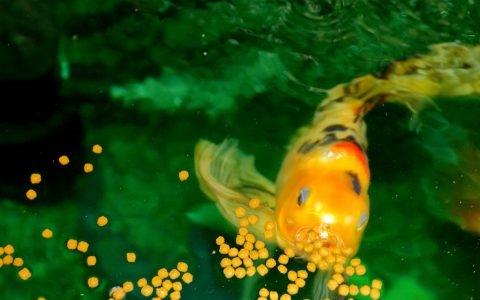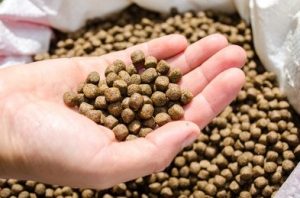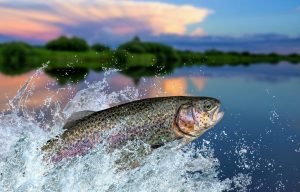- Easy to Absorb
- Easy to Digest
- Full of Proteins
- Pure Ingredients
- Get a Rapid Growth
- Adda Wazeer Abad ,Bahawalpur Road,Multan
- +92 61 4377060
Star Floating Feed - Star Feed Group

Star Floating Feed
EXTRA PERFORMANCE FEED SOLUTIONS THAT DELIVER RESULTS IN THE WATER STAR Floating feed unbeaten global aquaculture expertise, based on our experience helping customers need. The new ESSENTIAL and Ultra Extruded feed for multiple species including Pakistan major Rahu, Thela, Sole, Moree and tilaphia have been developed specially for former in Pakistan combining technologies and nutritional know- how from STAR FLOATING FEED. These tools allow us to optimize feed according to the local conditions taking into account variable like price and performance of raw material, to deliver the right feed at the right time.Floating Fish Feed
ESSENTIAL GROWER 20 % This standard performance floating fish feed is designed specifically for Rahu and mix fish culture to give low FCR and high profit in Pakistan environmental conditions while maintaining the quality of the water. Ingredient S.B Meal, R.S Meal, Canola Meal, Fish Meal Rice Polish, Wheat Bran, Maize, Maize gluten, soya bean oil Protein % 20 Fat % 5-6 Fiber % 12 Moisture % 12 Pallet size 4mm Vitamins and minerals Specification
- Great Technology
- Certified Engineers
- Delivery On Time
- Best Branding
Appropriate feeding oversight is required, and aquatic feed can be suspended for an extended period of time in the water surface. When feeding fish, it is not necessary to set up a feeding table, but a permanent place is required. When fish are eating, they must float on the surface so that their position can be observed immediately, the feeding volume can be adjusted in a timely manner, and the fish's growth and health can be monitored. Since a result, expanding aquatic feed is beneficial to scientific feeding and management, as it not only saves time but also increases labor output. Farmers may compute feeding amounts based on fish species, specifications, number, water temperature, and feeding rate, and then feed promptly, saving time and increasing labor output. Many anti-nutritional substances, such as gossypol, saponin, and trypsin inhibitor, can be found in oilseeds, soybean meal, and cottonseed meal. These anti-nutritional factors eventually lose some of their activity when they expand at a certain moisture and temperature, reducing damage to digestive enzymes, improving feed digestion and absorption, and reducing excretion. Material expands instantly under high temperature and pressure as a result of equipment expansion to fulfill the requirements of floating. Most dangerous microbes are killed by high temperatures, high humidity, and high pressure. According to the data, there are 10,000 Escherichia coli per gram-me of raw material, however after expansion, there are less than 10 Escherichia coli. Salmonella may be completely eliminated after expanding at a high temperature of 85°C, which aids in maintaining water quality and eliminating negative environmental factors in aquaculture. At the same time, the feed water content is between 8% and 10%, which improves the aquatic feed's storage stability. While processing sinking fish feed, the temperature is 85-95°C; when processing floating fish feed, the temperature is 120-145°C; the maximum temperature during extrusion and expansion is up to 150°C; raw material at high temperature is only work eight seconds. A variety of microorganisms, eggs, and harmful bacteria were eliminated during expansion at high temperature and pressure, improving feed quality and reducing animal digestive system disease.At the same time, high temperature curing can improve feed repeatability, absorption, and utilization in floating fish feed.
Floating fish feed has a good stability in the wate, not dissolved within two hours, and floating time of high quality floating fish feed can be as long as 12 hours, which can avoid the nutritional ingredients loss in water or sink into the mud and waste. The floating fish feed will save 10% — 20% material than sinking fish feed, even if some of the feed left, can be picked up to dry, which can highly limit lo control feed waste. Floating fish feed is easy lo observe and control, this can reduce or avoid powder material, residual bah to pollute wale, which are very favorable for environmental protection and the growth of fish. Due to high temperature, high pressure expansion, and drying treatment, water content is relatively low (usually around 9%), the panicles are hard with high stability. Therefore, floating fish feed can be stored fond long time, and is not easy to damp, not prone to mildew, which can avoid loss of nutrients. Floating feeds has very strong water stability (wouldn't apart within 16-32 hours), with little pollution on the water. Spongy, porous floating pellet feed for pelagic fish floats in the water, which is easy to observe the fish feeding and growth, conducive to scientific management.
After extrusion, the structure of feed pellet is loose, porous, crispy, and with good taste and flavor. Templates can be made into different shapes of holes, so that different shapes can be suppressed. It also can be produced special high fat feed for such as the Atlantic salmon, rainbow trout and other aquaculture species, some fat content is as high as 30%. Research showed the a degree of a type starch increased from 13.58% to 81.55% in the feed after extrusion, the higher degree of swelling, the easier to be fully utilized by the enzyme. Through the high temperature and high pressure in the process of expanding, the plant material can make the starch pasting and protein organized, which is beneficial to the digestion and absorption of the animal, improving the digestibility and utilization of feed. The digestibility of aquatic feed can be increased 10%-35% by expanded processing. For example, digestion rate of rainbow trout is only 40% for raw starch, while for cooked starch is more than 60%. At present, most of the cultured fish such as carp, grass carp, crucian carp are no stomach fish, they mainly rely on intestinal absorption. So the smaller the feed, the higher the rate of absorption and utilization of fish. In the process of production, 95% of raw material crushing fineness of sea water fish and other high grade expanded aquatic products are over 80 mesh, even for common varieties such as grass carp, tilapia and catfish, 95% of expanded raw material crushing fineness are over 60 mesh. The highest utilization rate of floating material after super fine crushing can reach 98%, while the highest utilization rate of the sinking material is only 75%.
The way of farming, floating fish feed has broad applicability, could be use for pond fish culture, paddy field fish culture, running water fish culture, cage fish culture, industrial fish farming, and fish farming in large area. Especially for smaller breeding density of fisheries, such as pond fish culture, paddy field fish culture, and fish farming in large area, using of floating fish feed is more superior than other feed. The species of fish, except for a few benthic fishes, regardless of freshwater fish, or marine fish can feed floating fish feed, such as basses, snakeheaded fishes, ornamental fishes, American frogs, turtles, punetaus. And common species such as grass carp, cyprinoid, crucian. For the more special physiological functions like basses and American frogs, using floating feed for aquaculture, Ills more convenient, more able to show its superiority. According to the different varieties and different growth stages, fish feed extruder machine can produce the floating fish feed which is suitable for its caliber and nutrition needs. It can meet the needs of conventional aquaculture and special aquaculture, not only to facilitate the cultivation of producers, but also to promote the development of production.


